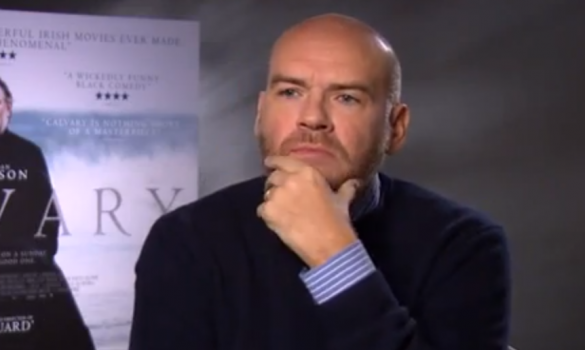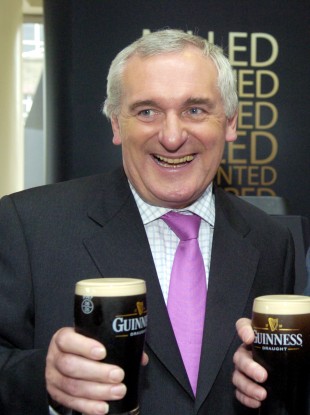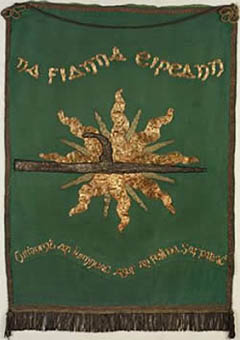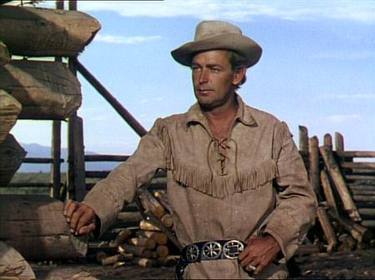* This is an edit of a piece I wrote for today's Irish Independent (and you can go out and buy the paper - it's a good habit to have).
It's about Scotland, Dublin & two troublesome London-Irishmen - and the new generation of London-Irish - who may view the UK in a different way to the generations that came before them.
Thanks for reading!
 |
| Sir Bob, Flying The Flag For Britishness |
*As the Scots
passionately debate their identity and future, two London-Irishmen have spoken
up to challenge our own sense of identity and self-worth. And been roundly
slapped down for it.
Film-maker John
Michael McDonagh delivered some (what he would consider) harsh truths for the
Irish film industry and film-makers.
And in London, Bob
Geldof managed to do something unique in the midst of this deeply partisan
debate on Scottish independence, unite public opinion across these islands in
loudly expressed belief that Sir Bob should (as so many tweeted) “shut the f**k
up”.
McDonagh, in an
interview given recently to publicise his latest movie, Calvary, said he did not want it to be considered “an Irish film”
as he did not find Irish movies to be “technically that accomplished” or
“intelligent”.
Cue a social media storm and howls from the cheap seats that if McDonagh didn’t want movies like The Guard and Calvary to be considered “Irish” – he shouldn’t have accepted €1.7m in taxpayer’s money from the Irish Film Board to make them.
And it is a good point. As is the point that McDonagh has no problem setting his non-Irish films in Ireland, filling them full of what you could call broad Irish stereotypes and then shooting them with an Irish cast and crew (despite their supposed technical failings).
 |
| Filmmaker John McDonagh - London Irish, Like! |
However, what many missed, in the rush to erect a scaffold for McDonagh, was that Calvary star Brendan Gleeson, in the very same interview, had some equally forthright views on the wider issue of Irish society and Irish people.
Gleeson talked about
the sense of “rage” against the politicians, the bankers and the “paedophile
priests”. But he added; “it tends to be muted and a little bit repressed”.
“People are not
marching in the streets and burning buildings down, in the way, maybe, that the
Greeks let off steam about their situation”.
Gleeson and others,
have, of course, pointed to this peculiarity in the Irish psyche before, the failure
to turn rage into action. But as a true-blue Dub and a national icon, the
gruff, salt-of-the-earth actor has a licence to point these failings out to us.
We welcome it and applaud him for showing a bit of passion. For giving us a
well-deserved kick up the arse.
John Michael
McDonagh, on the other hand, is London-Irish. The son of immigrants who has the
temerity to come back, take our tax-payers cash and make films that take
gleeful aim at what he judges to be the black, rotten heart of modern Ireland.
Bob Geldof is, if anything, worse. The only Irishman alive who Bono looks to and thinks; “Jesus, people really love to hate that guy”.
 |
| I'm Looking Into Your Very Soul |
Geldof pushes a lot
of buttons. He is a motor-mouth, ex-Blackrock College boy, a ferocious
self-starter who got the hell out of Ireland to become a multi-millionaire and
an honorary knight of the British Empire. And Sir Bob has been slagging off his
native land since 1977.
But what Bob Geldof
was saying about Britishness, at that Let’s Stay Together rally in Trafalgar
Square, came from what he himself called “an
immigrant’s gratitude” to the country to which he credits so much of his
success.
The UK has been very good to Bob Geldof, who was recently said to be
worth over €120m and who may believe that ‘80s Ireland in particular had nothing
to offer him.
And as an Irishman living (mostly) in London myself, I can see where
Bob is coming from.
Talk to the young Irish men and women who are here now (there are so,
so many of them all over this great city and the Irish networks are still
strong) and you don’t hear the misty-eyed regard for home that you might have
heard in the ‘80s.
You don’t hear much if any anti-British sentiment. Mostly, they
recognise the opportunities that London gives them and the energy, industry and
cosmopolitan buzz in a city that is all about getting on and getting ahead.
Yes, London can be a very tough place. Rented accommodation costs on
average 50 per cent more than in the rest of the UK.
But for many thousands of young, educated and hard-working Irish people, London and the UK is a place where talent meets opportunity. They may still think Scotland should take its chance to go it alone.
But they are perfectly comfortable living in the land of our former oppressor and not really all that hung up on “800 years” and all that. Unless, of course, Ireland are playing out west in Twickenham.
They may not have a hell of a lot in common with Bob Geldof. But like him, they can appreciate what relocating to the UK has allowed them to do. And would probably think the concept of Britishness – as the idea of an open, tolerant and vibrant society - is at least worth defending.
Scotland will decide tomorrow. But many of the Irish voices you hear now in every corner of London have already made their minds up. Britain, for them at least, is working.
THE END!















